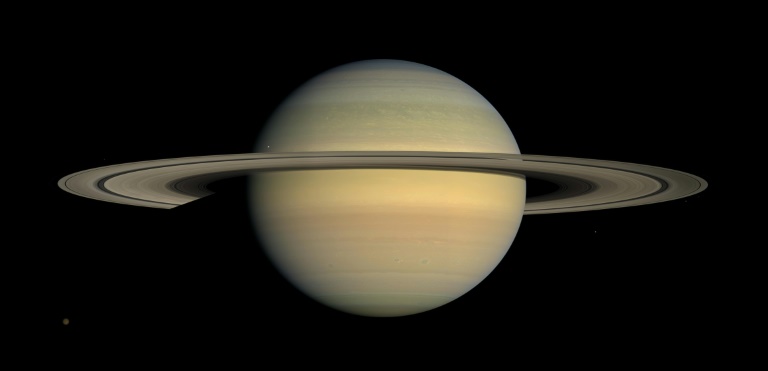NASA is seeking suggestions from the public for a message to beam far, far out into space to the probe Voyager 1 in time for the 40th anniversary of its launch.
The US space agency wants input via Twitter, Instagram, Facebook and other social media, and the public will vote on what short message we on earth should send to the intrepid, overachieving little space traveler.
NASA said on its website that people have until August 15 to make submissions of a maximum of 60 characters.
NASA, its Jet Propulsion Laboratory and the Voyager team will cull them, and the public will vote to pick the winner to send toward Voyager 1 on September 5.
That probe is now almost 13 billion miles from Earth. It is the most distant human-made object ever.

Saturn and its main rings as seen in this NASA photo are among the wonders visited as part of the Voyager space probe missions
And it is the first spacecraft to enter what is known as interstellar space. NASA defines this as beginning where the sun’s flow of material and its magnetic field stop affecting its surroundings.
Voyager 1 was launched on September 5, 1977, and a sister ship, Voyager 2, actually went up about two weeks earlier. Both traveled on Titan-Centaur rockets.
The mission of both was study the solar system’s giant, gaseous outer planets: Jupiter, Saturn, Uranus and Neptune.
Voyager 2 went up first because its trajectory was a longer, slower one. It is now almost 11 billion miles from home.
The resumes of both on a project that was never designed to last so long or reap so much treasure are simply eye-popping.
For instance, NASA says Voyager 1 was the first spacecraft to detect lightning on a planet other than Earth. It was on Jupiter.
And both Voyagers found suggestions of an ocean beyond Earth. This was on Jupiter’s moon Europa. The list of other achievements is long.
Download our app




